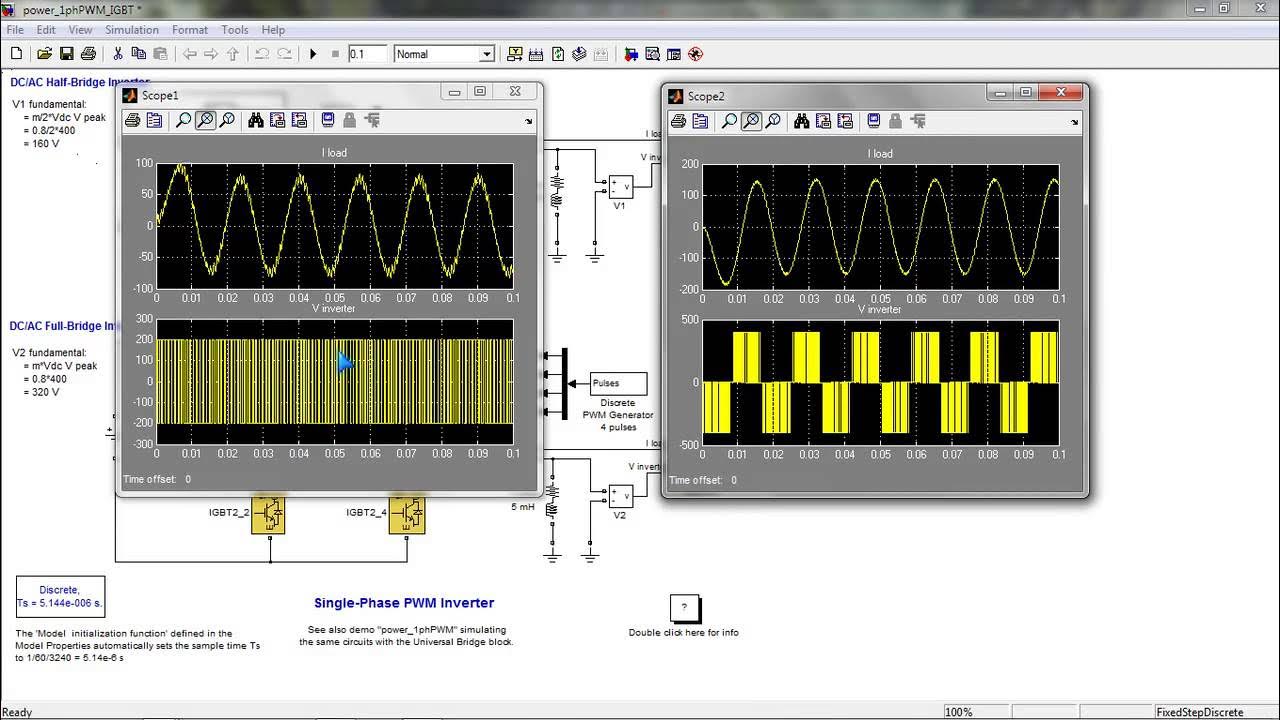Eletrônica de Potência 1: (A.05) Retificador Monofásico Não Controlado de Meia Onda - Carga R
Summary
TLDRIn this lesson on power electronics, the focus is on the analysis of a monophase uncontrolled half-wave rectifier with a resistive load. The lecture covers the basic principles of rectification, explaining how AC voltage is converted into DC voltage, albeit with ripple. The behavior of the rectifier circuit is analyzed in two operational stages: the positive half-cycle and the negative half-cycle. The calculations for average and RMS values of voltage and current are discussed, along with their application in practical exercises. The lesson concludes with a practical example involving a resistive load and a step-by-step solution for power and current calculations.
Takeaways
- 😀 The class covers the analysis of non-controlled monophase rectifiers, specifically a half-wave rectifier with a resistive load.
- 😀 Rectification is the process of converting alternating current (AC) to direct current (DC), but the output is not pure DC and contains AC components that can be filtered.
- 😀 In non-controlled rectifiers, only diodes are used, and the output DC amplitude is determined by the AC supply's amplitude.
- 😀 The main objective of a half-wave rectifier is to convert AC power to DC power, although practical applications of this type of rectifier are limited.
- 😀 The analysis focuses on a simple half-wave rectifier circuit that includes a transformer, diode, and resistive load.
- 😀 The rectifier operates in two stages: first, the diode is forward-biased, allowing current to flow; second, the diode is reverse-biased, and no current flows.
- 😀 During the first stage, the output voltage follows the AC supply, and the current waveform matches the voltage waveform.
- 😀 In the second stage, when the diode is reverse-biased, the output voltage is zero, and no current flows through the load.
- 😀 The average output voltage of the half-wave rectifier is determined by integrating the voltage waveform over one period, resulting in an average value of 0.318 times the peak AC voltage.
- 😀 The root mean square (RMS) voltage of the output is calculated as the square root of the average of the squared voltage over the period, resulting in a value of 0.707 times the peak AC voltage.
- 😀 Practical examples, such as calculating the average current, RMS current, and power absorbed by the load in a half-wave rectifier circuit, demonstrate how these concepts are applied in real scenarios.
Q & A
What is the main focus of this class on power electronics?
-The class focuses on analyzing and understanding non-controlled single-phase rectifiers, specifically the half-wave rectifier with a resistive load.
What is the purpose of rectification in power electronics?
-The purpose of rectification is to convert alternating current (AC) voltage and current into direct current (DC) voltage and current. However, the output DC is not pure and may require a filter to eliminate unwanted components.
Why is the half-wave rectifier rarely used in industrial applications?
-The half-wave rectifier has limited practical applications, especially in industrial settings, because it only uses one half-cycle of the AC input, leading to inefficiencies in power conversion.
What are the two stages of operation in a single-phase half-wave rectifier?
-The two stages are: 1) the diode conducting with direct polarization during the positive half-cycle of the AC input, and 2) the diode being reversed and non-conducting during the negative half-cycle.
What happens to the output voltage and current during the second stage of operation in the rectifier?
-During the second stage, when the diode is non-conducting, no current flows through the load, and the output voltage is zero.
How is the average output voltage of a half-wave rectifier calculated?
-The average output voltage is calculated by integrating the voltage waveform over one period, which results in an average value of approximately 0.318 times the peak AC voltage.
What is the relationship between the RMS voltage and current in the rectifier circuit?
-The RMS (root mean square) voltage is the effective voltage of the output, and the RMS current is calculated by dividing the RMS voltage by the resistance of the load.
How do you calculate the RMS voltage in a half-wave rectifier?
-The RMS voltage is calculated using the integral of the square of the voltage waveform over the period, which results in an RMS value of approximately 0.707 times the peak AC voltage.
How do you determine the maximum current in the rectifier circuit?
-The maximum current is determined by dividing the peak voltage by the resistance of the load, resulting in the peak current value.
What is the power factor of the rectifier circuit, and how is it calculated?
-The power factor is the ratio of the power absorbed by the load to the apparent power supplied by the source. It is calculated as approximately 0.707 for this circuit.
Outlines

This section is available to paid users only. Please upgrade to access this part.
Upgrade NowMindmap

This section is available to paid users only. Please upgrade to access this part.
Upgrade NowKeywords

This section is available to paid users only. Please upgrade to access this part.
Upgrade NowHighlights

This section is available to paid users only. Please upgrade to access this part.
Upgrade NowTranscripts

This section is available to paid users only. Please upgrade to access this part.
Upgrade NowBrowse More Related Video

Eletrônica de Potência 1: (A.07) Retificador Monofásico de Meia Onda - Carga RL e Diodo de Retorno

Eletrônica de Potência 1: (A.10) Retificador Monofásico Não Controlado de Onda Completa - Carga RL

Inverter_simulink

Half-Wave vs Full-Wave Rectifiers - Electronics Basics 19

Half Wave Rectifier | IEE | GXEST104 | KTU 2024 |

Full Wave Rectifier - Conceptual Review | Basic Electronics
5.0 / 5 (0 votes)